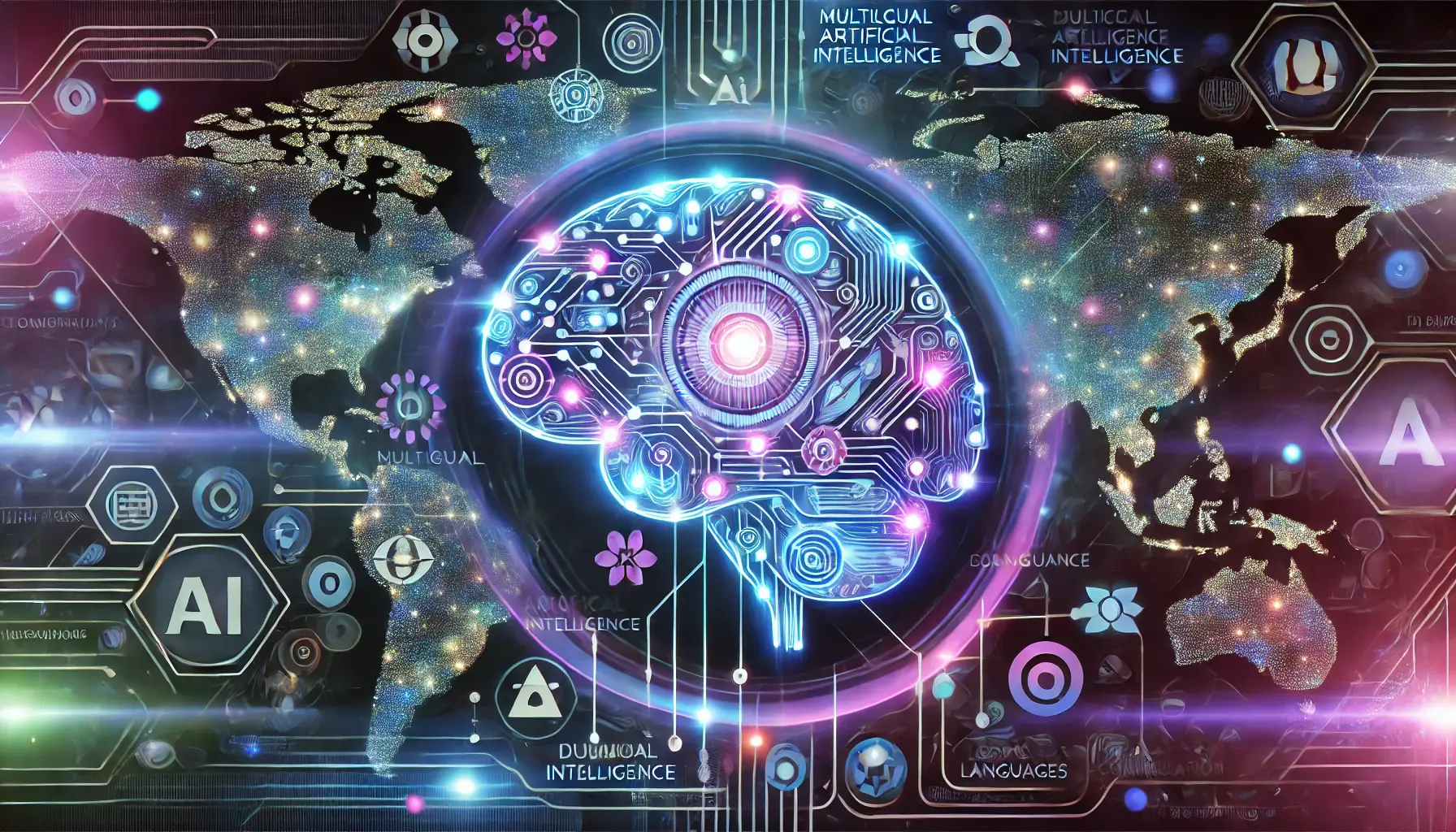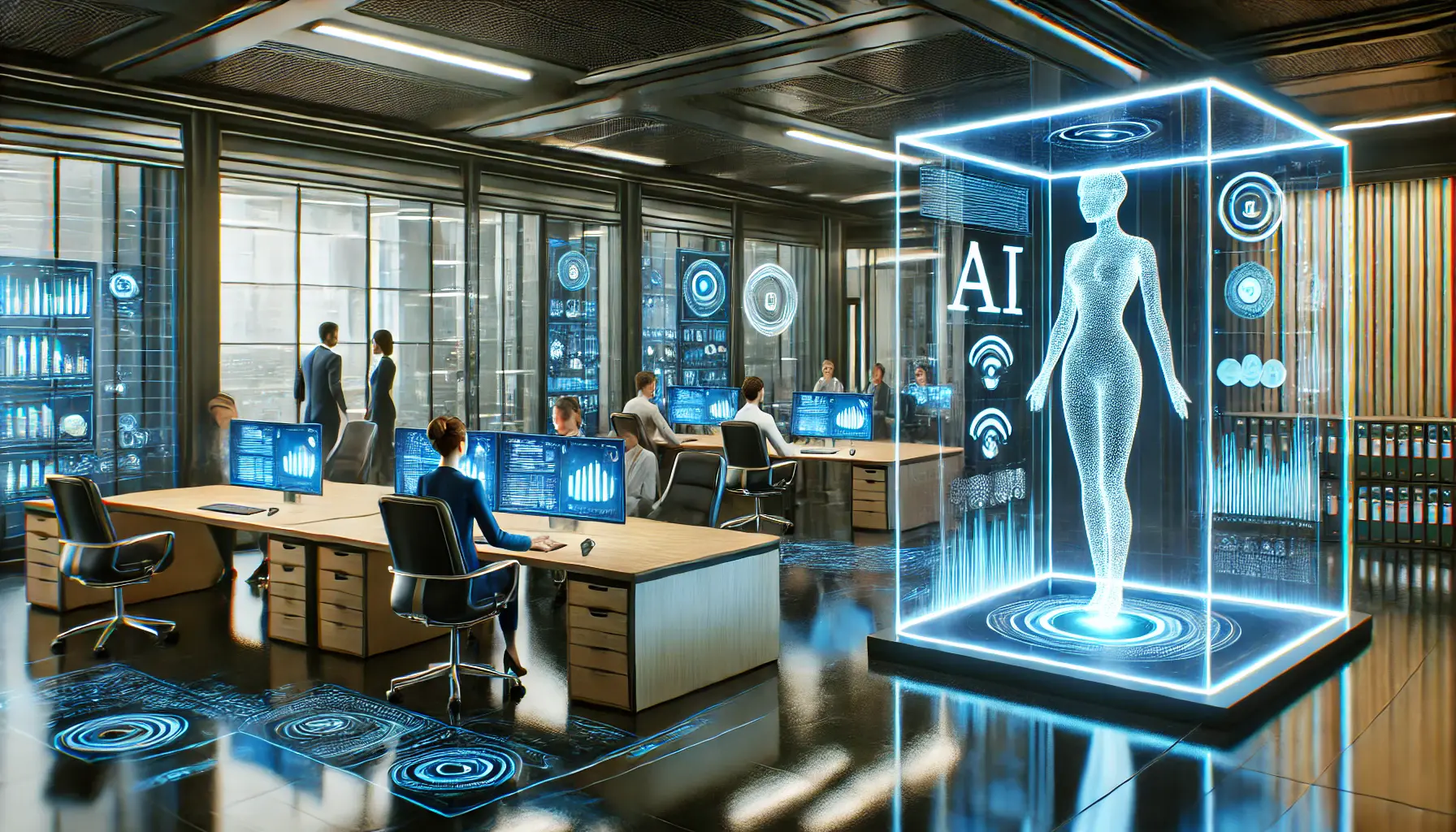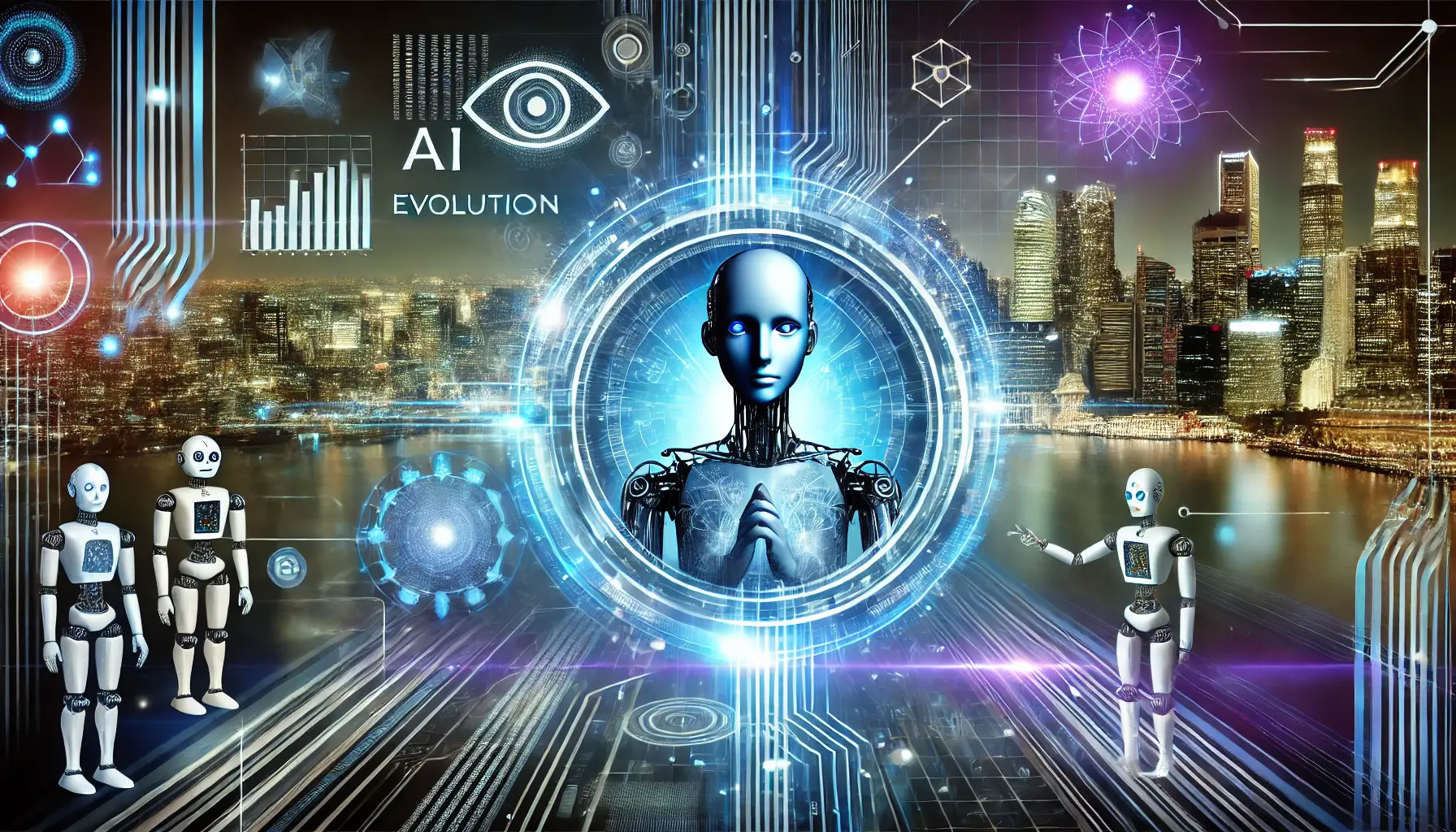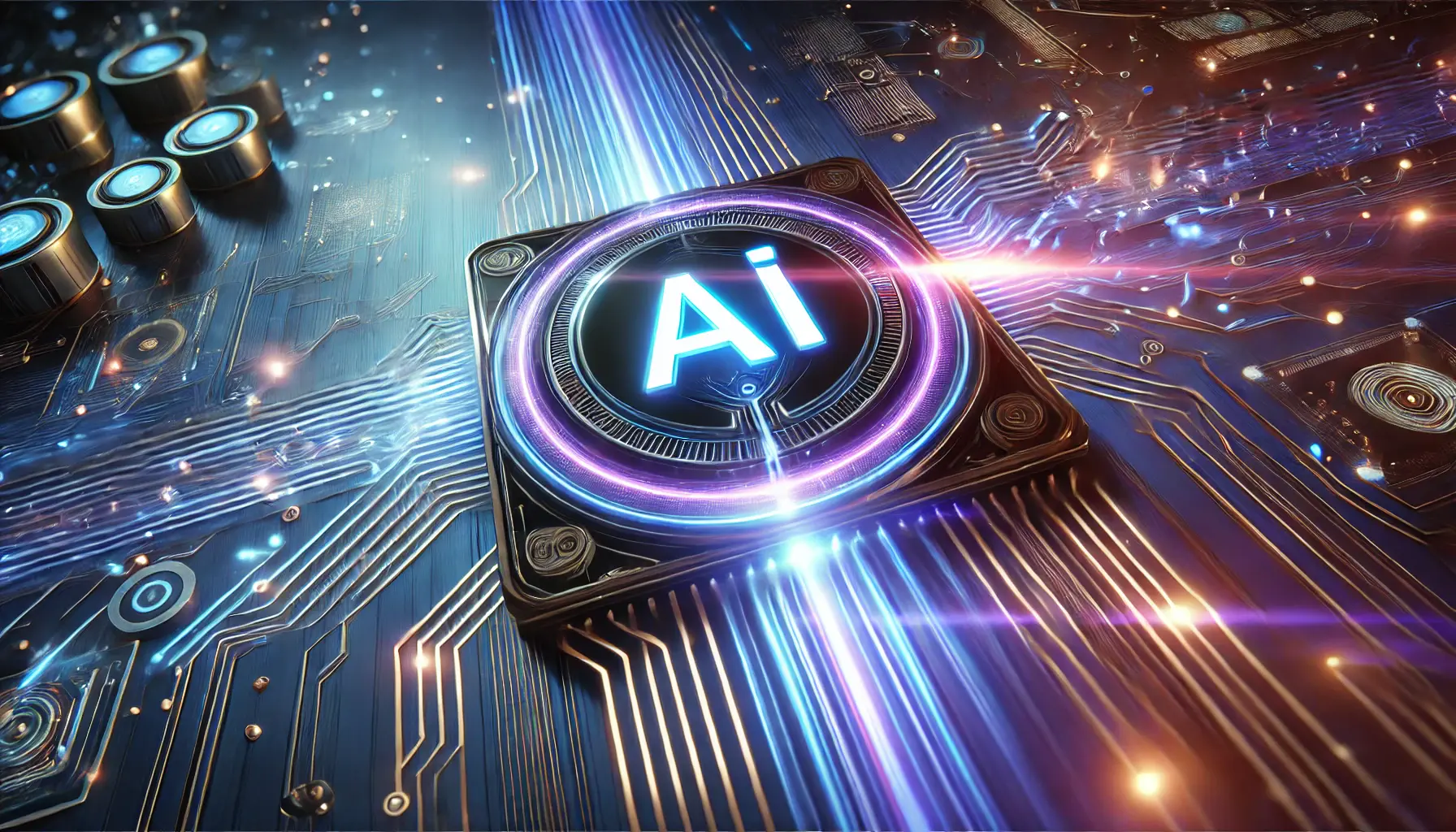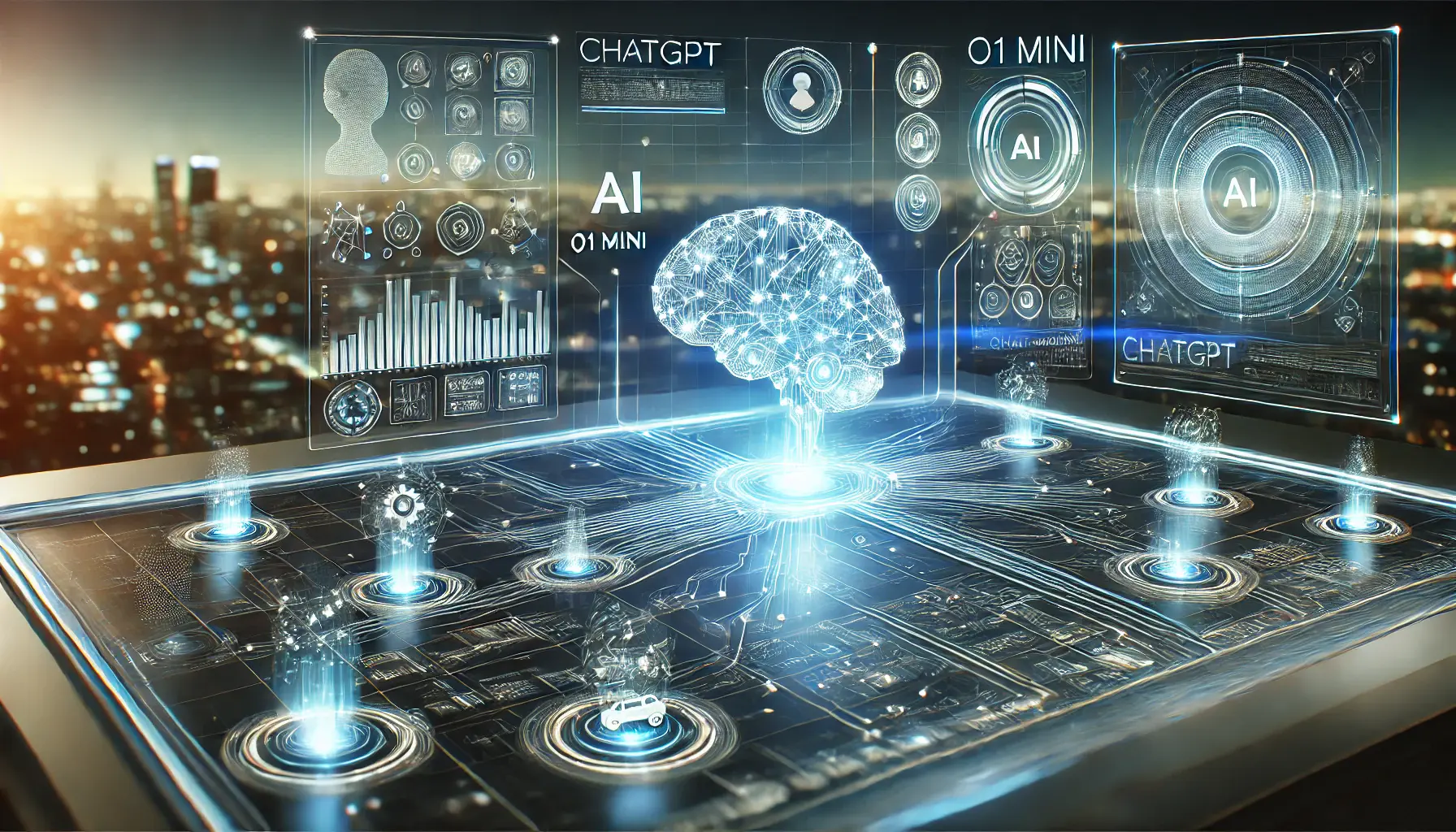The advent of ChatGPT 4 has been a watershed moment in the realm of artificial intelligence, offering unprecedented capabilities in natural language processing and understanding.
This iteration of OpenAI’s generative pre-trained transformer has not only expanded the horizons of AI’s applicability but also spotlighted the inherent limitations that accompany its advanced technology.
As we delve into the nuances of ChatGPT 4, it becomes imperative to understand these constraints to fully leverage its potential while acknowledging its boundaries.
ChatGPT 4, despite its advancements, is not without its limitations.
These constraints range from its reliance on pre-existing data to its inability to access real-time information, impacting its effectiveness and application scope.
By exploring these limitations, users and developers can better navigate the challenges posed by this powerful tool, ensuring more informed and effective utilization.
- Understanding ChatGPT 4’s Core Limitations
- Technical Constraints and Ethical Considerations
- Integration and Application in Various Industries
- Advancements and Future Directions
- Challenges in AI Development and Deployment
- Collaborative Efforts in AI Research and Development
- Maximizing the Potential of ChatGPT 4
- Embracing the Future with ChatGPT 4
- FAQs on The Limitations of ChatGPT 4
Understanding ChatGPT 4’s Core Limitations
Dependence on Historical Data
One of the fundamental limitations of ChatGPT 4 lies in its reliance on historical data for generating responses.
Trained on vast datasets up to a certain point in time, ChatGPT 4’s knowledge base is static, lacking the ability to update itself with the latest information or events post its last training cut-off in September 2021.
This limitation restricts its applicability in scenarios requiring up-to-the-minute data, such as current events analysis or real-time decision-making.
While developers can periodically update the model with new data, this process is not instantaneous and requires significant computational resources, making real-time learning infeasible for ChatGPT 4.
Challenges with Contextual Understanding
Despite its sophisticated algorithms, ChatGPT 4 sometimes struggles with understanding and maintaining context in longer conversations or complex queries.
This limitation can lead to responses that, while technically accurate, may miss the nuanced intent of the user’s question or fail to provide coherent continuity in extended dialogues.
Such challenges with contextual understanding can hinder the model’s effectiveness in applications requiring deep conversational engagement or precise interpretation of user intent.
Efforts to mitigate this issue involve refining the model’s training processes and incorporating more advanced techniques for context retention.
However, achieving human-like contextual understanding remains a significant challenge for ChatGPT 4 and AI development at large.
Difficulty with Creative and Abstract Thinking
ChatGPT 4’s ability to generate creative content is impressive, yet it falls short when tasked with truly abstract or innovative thinking.
While it can mimic creativity by recombining elements from its training data in novel ways, it lacks genuine originality or the ability to conceptualize ideas beyond its programmed patterns.
This limitation is particularly evident in tasks requiring out-of-the-box thinking or the creation of content that deviates significantly from existing examples.
The development of AI models capable of genuine creativity and abstract thought is an ongoing area of research, with each iteration bringing us closer to this goal.
Nevertheless, the current limitations of ChatGPT 4 in this domain underscore the distinction between artificial intelligence and human cognition.
Technical Constraints and Ethical Considerations
As we navigate through the capabilities of ChatGPT 4, it’s crucial to address not only its technical constraints but also the ethical considerations that arise with its use.
These aspects are intertwined, influencing how this technology is developed, deployed, and interacted with by users across various sectors.
Technical constraints often dictate the operational boundaries of ChatGPT 4, while ethical considerations shape its societal impact.
Together, they present a comprehensive overview of the challenges and responsibilities associated with advanced AI systems.
Technical Constraints of ChatGPT 4
- Computational Requirements: The advanced capabilities of ChatGPT 4 come at the cost of significant computational resources. Training and running such a sophisticated model require substantial processing power and energy, limiting accessibility for smaller organizations or individuals without the necessary infrastructure.
- Data Bias and Quality: The quality and bias of the data used to train ChatGPT 4 significantly affect its outputs. Inherent biases in training materials can lead to skewed or prejudiced responses, while low-quality data can undermine the model’s reliability and accuracy.
- Language and Cultural Limitations: Despite its multilingual capabilities, ChatGPT 4’s performance varies across languages, with a tendency to excel in English. This variation raises concerns about equitable access and effectiveness, particularly for users engaging with the model in other languages or cultural contexts.
Ethical Considerations in Deploying ChatGPT 4
- Privacy and Data Security: The use of ChatGPT 4, especially in sensitive applications, raises concerns about data privacy and security. Ensuring the confidentiality and integrity of user data is paramount to maintaining trust and compliance with global data protection regulations.
- Transparency and Accountability: As AI systems like ChatGPT 4 become more integrated into decision-making processes, the need for transparency in their operations and accountability for their outputs becomes increasingly critical. Users and stakeholders require clarity on how decisions are made and the ability to audit or challenge AI-generated outcomes.
- Impact on Employment: The automation capabilities of ChatGPT 4, while beneficial in many respects, also pose potential risks to employment in sectors susceptible to automation. Balancing efficiency gains with the socio-economic implications of workforce displacement is a key ethical challenge.
The interplay between technical constraints and ethical considerations underscores the complexity of developing and deploying AI technologies like ChatGPT 4.
Addressing these challenges requires a multidisciplinary approach, combining technical innovation with ethical foresight and societal engagement.
Integration and Application in Various Industries
The integration and application of ChatGPT 4 across various industries have showcased its versatility and transformative potential.
From healthcare to education, finance, and creative arts, ChatGPT 4 is redefining operational paradigms and opening new avenues for innovation and efficiency.
Each sector presents unique opportunities for leveraging ChatGPT 4, along with specific challenges that need to be navigated to maximize its benefits.
Healthcare
In the healthcare industry, ChatGPT 4 is revolutionizing patient care and medical research.
Its applications range from enhancing diagnostic procedures to personalizing patient interactions and streamlining administrative tasks.
However, the sensitive nature of medical data and the need for precision in healthcare decisions underscore the importance of accuracy and privacy in deploying ChatGPT 4 within this sector.
- Automating patient intake forms and history collection to improve efficiency.
- Supporting diagnostic processes through symptom analysis and medical literature review.
- Facilitating personalized patient education and follow-up care instructions.
Education
The education sector benefits from ChatGPT 4 through customized learning experiences, automated grading, and enhanced research capabilities.
By tailoring educational content to individual learning styles and providing instant feedback, ChatGPT 4 supports a more engaging and effective learning environment.
Challenges include ensuring content accuracy and maintaining the integrity of educational assessments.
- Creating dynamic, interactive learning modules for students at all levels.
- Offering instant tutoring and homework assistance in a wide range of subjects.
- Enabling educators to develop curriculum materials and assessments efficiently.
Finance
In finance, ChatGPT 4 is being employed to automate customer service, analyze market trends, and personalize financial advice.
Its ability to process vast amounts of financial data in real-time allows for more informed decision-making and enhanced customer experiences.
Key considerations include data security and the ethical use of AI in financial decision-making.
- Streamlining customer inquiries and transactions through automated chatbots.
- Conducting in-depth market analysis and forecasting to guide investment strategies.
- Customizing financial planning and advisory services based on individual client profiles.
Creative Arts
ChatGPT 4’s impact on the creative arts includes generating original content, aiding in the creative process, and facilitating new forms of artistic expression.
From writing and music composition to visual arts, ChatGPT 4 serves as a collaborative tool that enhances creativity.
The challenge lies in navigating the balance between AI-generated content and human creativity.
- Assisting authors and screenwriters in plot development and character creation.
- Composing music and lyrics in various styles and genres.
- Generating artwork descriptions and supporting the conceptualization of visual projects.
The diverse applications of ChatGPT 4 across industries highlight its potential to drive innovation and efficiency.
By understanding and addressing the specific challenges within each sector, organizations can harness the full power of ChatGPT 4 to achieve their strategic objectives.
Advancements and Future Directions
The journey of ChatGPT 4 from its inception to its current state is a testament to the rapid advancements in artificial intelligence.
As we look to the future, the trajectory of ChatGPT and similar AI technologies is poised for even more groundbreaking developments.
These future directions not only promise to enhance the capabilities of AI models but also to address the existing limitations and ethical concerns associated with their deployment.
Understanding the potential future advancements in AI requires a glimpse into the ongoing research and development efforts aimed at making AI more versatile, reliable, and aligned with human values and societal needs.
Enhancing Model Robustness and Reliability
One of the primary focuses of future AI research is enhancing the robustness and reliability of models like ChatGPT 4.
Efforts are underway to develop AI systems that can understand and process information with greater accuracy, reducing instances of misinformation and bias.
This involves not only refining the models’ training processes but also incorporating mechanisms for real-time learning and adaptation.
- Implementing advanced algorithms for dynamic learning from new data sources.
- Developing more sophisticated methods for detecting and mitigating biases in AI responses.
- Integrating feedback loops that allow AI models to refine their outputs based on user interactions and corrections.
Expanding AI Accessibility and Multilingual Support
Another key area of development is expanding the accessibility of AI technologies to a broader audience, including non-English speakers and individuals with disabilities.
By enhancing multilingual support and designing more intuitive user interfaces, AI developers aim to democratize access to AI tools, ensuring that the benefits of AI can be enjoyed by people from diverse backgrounds and capabilities.
- Increasing the number of languages supported by AI models, with a focus on underrepresented languages.
- Improving voice recognition and synthesis capabilities to facilitate use by visually impaired and other differently-abled individuals.
- Creating more user-friendly interfaces that simplify interactions with AI for non-technical users.
Addressing Ethical and Societal Implications
As AI continues to integrate into various aspects of human life, addressing its ethical and societal implications becomes increasingly critical.
Future developments in AI will likely include enhanced ethical frameworks and governance models that ensure AI technologies are used responsibly and for the greater good.
This includes measures to protect privacy, ensure transparency, and prevent misuse.
- Developing and implementing global standards for AI ethics and governance.
- Enhancing transparency in AI decision-making processes to build trust and accountability.
- Creating mechanisms for monitoring and preventing the harmful use of AI technologies.
The future of ChatGPT 4 and AI at large is not just about technological advancements but also about creating a harmonious relationship between AI and society.
By focusing on robustness, accessibility, and ethical use, the next generation of AI models will be better equipped to serve humanity’s diverse needs and challenges.
Challenges in AI Development and Deployment
The path to developing and deploying advanced AI models like ChatGPT 4 is fraught with challenges that span technical, ethical, and societal domains.
These challenges are not just hurdles to be overcome but also opportunities for growth and learning within the AI community.
Addressing these issues requires a concerted effort from developers, researchers, policymakers, and the public to ensure that AI technologies evolve in a way that benefits all of society.
Technical Challenges in AI Evolution
Technical challenges in AI development are as diverse as they are complex.
They range from the need for vast computational resources to the difficulties in creating models that can understand and interpret the nuances of human language and behavior.
Overcoming these challenges is crucial for the next generation of AI models to reach their full potential.
- Scaling AI models requires not just more powerful hardware but also more efficient algorithms that can learn from data more effectively.
- Ensuring AI models understand context and nuance in human communication is an ongoing challenge that requires innovative approaches to model training and design.
- Developing AI systems that can operate ethically and make decisions aligned with human values necessitates a deep understanding of both technology and philosophy.
Ethical and Societal Challenges
The ethical and societal challenges of AI development are perhaps even more daunting than the technical ones.
As AI systems become more integrated into our daily lives, questions about privacy, autonomy, and the future of work become increasingly pressing.
Addressing these concerns is essential for building trust in AI technologies and ensuring they are used responsibly.
- Protecting user privacy in an age where AI systems can analyze vast amounts of personal data is a significant concern that requires robust data protection measures.
- Ensuring AI systems do not perpetuate or exacerbate existing societal inequalities requires careful attention to the data they are trained on and the contexts in which they are deployed.
- Preparing for the impact of AI on the workforce involves not just technological innovation but also social and economic policies that support those affected by automation.
Overcoming Deployment Hurdles
Deploying AI models like ChatGPT 4 in real-world settings presents its own set of challenges, from technical integration issues to regulatory compliance and public acceptance.
Successfully navigating these hurdles is crucial for realizing the potential of AI to improve human lives.
- Integrating AI systems into existing technological infrastructures requires careful planning and coordination to ensure compatibility and performance.
- Navigating the complex landscape of AI regulation and compliance demands a thorough understanding of both the technology and the legal framework in which it operates.
- Building public trust in AI systems involves transparent communication about their capabilities, limitations, and the measures in place to ensure their ethical use.
The challenges facing AI development and deployment are significant, but they are not insurmountable.
Through collaborative efforts across disciplines and sectors, the AI community can address these issues, paving the way for a future where AI technologies are both powerful and beneficial to society as a whole.
Collaborative Efforts in AI Research and Development
The advancement of AI technologies, particularly models as sophisticated as ChatGPT 4, is not solely the achievement of individual researchers or organizations.
It represents the culmination of collaborative efforts across the global AI research community.
These collaborations span academia, industry, and governmental bodies, each contributing unique perspectives and resources to the development of AI.
The synergy among these diverse stakeholders is crucial for overcoming the multifaceted challenges AI presents and for steering the direction of future innovations towards beneficial outcomes for society.
Academic and Industry Partnerships
Partnerships between academic institutions and the tech industry have been instrumental in pushing the boundaries of AI research and development.
Universities and research labs contribute cutting-edge theoretical insights and methodologies, while companies provide the computational resources and practical applications that bring these ideas to life.
Such collaborations ensure that AI advancements are both scientifically robust and practically viable.
- Joint research projects and shared datasets facilitate the exchange of knowledge and accelerate the pace of innovation in AI technologies.
- Internship and fellowship programs allow students and researchers to gain hands-on experience with real-world AI applications, enriching the academic pursuit with practical insights.
- Industry-sponsored academic conferences and workshops serve as vital forums for the dissemination of new research findings and the fostering of professional networks within the AI community.
Global AI Initiatives and Consortia
The complexity of AI challenges necessitates a global approach, leading to the formation of international consortia and initiatives aimed at coordinating AI research and policy efforts.
These platforms facilitate collaboration among countries, pooling resources and expertise to tackle issues such as AI ethics, governance, and the equitable distribution of AI benefits.
- International AI research consortia bring together experts from around the world to work on shared projects, promoting a global perspective on AI development.
- Global initiatives on AI ethics and governance aim to establish common frameworks and standards that guide the responsible development and deployment of AI technologies.
- Collaborative efforts in AI education and workforce development seek to prepare individuals worldwide for the changing landscape of work in the AI era.
Public and Private Sector Cooperation
The cooperation between the public and private sectors is vital for creating an environment that supports AI innovation while ensuring its alignment with public interests.
Governments play a key role in funding AI research, enacting regulations that promote ethical AI practices, and facilitating public-private partnerships that leverage the strengths of both sectors.
- Public funding for AI research initiatives supports foundational studies and the exploration of AI applications for public welfare.
- Regulatory frameworks developed in consultation with AI experts from the private sector help ensure that AI technologies are safe, ethical, and beneficial.
- Public-private partnerships in AI projects can address societal challenges in areas such as healthcare, education, and environmental protection, demonstrating the potential of AI to contribute to the public good.
The collaborative nature of AI research and development is a testament to the field’s complexity and its profound implications for society.
By fostering cooperation across sectors and borders, the AI community can navigate the ethical, technical, and societal challenges of AI, ensuring that its advancements lead to positive outcomes for humanity.
Maximizing the Potential of ChatGPT 4
The journey of integrating and maximizing the potential of ChatGPT 4 within various domains is an ongoing process, marked by continuous learning, adaptation, and innovation.
As organizations and individuals across different sectors seek to leverage ChatGPT 4’s advanced capabilities, a strategic approach tailored to the unique needs and challenges of each domain becomes essential.
This final exploration delves into strategies for harnessing the power of ChatGPT 4, ensuring its benefits are fully realized while navigating the complexities it presents.
Strategic Implementation in Business Operations
For businesses aiming to integrate ChatGPT 4 into their operations, the focus should be on enhancing efficiency, improving customer experiences, and fostering innovation.
Identifying specific use cases where ChatGPT 4 can add the most value is the first step towards a strategic implementation.
This could range from automating customer service interactions to generating dynamic content for marketing campaigns.
- Conducting pilot projects to assess the impact of ChatGPT 4 on operational efficiency and customer satisfaction.
- Training staff to work alongside AI tools, emphasizing the complementary nature of human and artificial intelligence.
- Regularly reviewing and updating AI deployment strategies based on performance data and evolving business needs.
Enhancing Educational Experiences
In the realm of education, ChatGPT 4 offers opportunities to personalize learning, automate administrative tasks, and provide instant feedback to learners.
Educators and institutions can maximize these benefits by integrating ChatGPT 4 into their teaching methodologies and learning management systems, always with a focus on augmenting rather than replacing the human element of education.
- Developing interactive and adaptive learning materials powered by ChatGPT 4 to cater to diverse learning styles and needs.
- Utilizing ChatGPT 4 for grading and feedback, freeing educators to focus on more complex and creative teaching tasks.
- Encouraging collaborative projects that leverage ChatGPT 4’s capabilities to enhance creativity and critical thinking among students.
Advancing Healthcare Innovation
ChatGPT 4’s potential in healthcare spans from diagnostic support to personalized patient education and operational automation.
Healthcare providers can harness this potential by integrating ChatGPT 4 into clinical workflows, patient management systems, and telehealth platforms, always prioritizing patient safety and data privacy.
- Implementing ChatGPT 4 as a support tool for clinicians in diagnosing and developing treatment plans, complemented by expert human oversight.
- Using ChatGPT 4 to automate routine administrative tasks, allowing healthcare professionals to dedicate more time to patient care.
- Enhancing patient engagement and education through personalized, AI-driven health information and support.
Fostering Creative Endeavors
The creative industries can benefit from ChatGPT 4 by using it as a tool for inspiration, content generation, and exploring new forms of artistic expression.
Artists, writers, and creators can engage with ChatGPT 4 to push the boundaries of creativity, while also critically assessing the role of AI in the creative process.
- Exploring new genres and ideas with ChatGPT 4’s assistance, using it as a brainstorming partner to spark creativity.
- Incorporating ChatGPT 4-generated content into artistic projects, blending AI creativity with human insight and emotion.
- Engaging in dialogues about the implications of AI in art, fostering a deeper understanding of the relationship between technology and creativity.
Maximizing the potential of ChatGPT 4 requires a thoughtful and strategic approach, tailored to the specific goals and challenges of each domain.
By embracing the opportunities it offers and addressing the complexities it presents, we can ensure that ChatGPT 4 serves as a powerful tool for innovation, efficiency, and progress across all sectors of society.
Embracing the Future with ChatGPT 4
As we stand on the brink of a new era in artificial intelligence, the emergence of ChatGPT 4 marks a significant milestone in our journey towards more sophisticated, versatile, and impactful AI technologies.
The exploration of ChatGPT 4’s limitations, its integration across various industries, the challenges it presents, and the collaborative efforts driving its evolution, all paint a picture of a technology that is not just transforming our present but also shaping our future.
The Path Forward with ChatGPT 4
The journey with ChatGPT 4 is as much about recognizing its current limitations as it is about envisioning its potential.
The path forward involves a concerted effort from developers, users, and policymakers to harness its capabilities responsibly while addressing the ethical, technical, and societal challenges it poses.
As we navigate this path, the focus should be on leveraging ChatGPT 4 to enhance human endeavor, rather than replace it, ensuring that the technology serves to augment our capabilities and enrich our lives.
Strategies for Maximizing ChatGPT 4’s Impact
- Continued Innovation: Pushing the boundaries of what ChatGPT 4 can achieve through ongoing research and development, ensuring that the technology remains at the forefront of AI advancements.
- Responsible Deployment: Implementing ChatGPT 4 in a manner that prioritizes ethical considerations, data privacy, and the well-being of all stakeholders, fostering trust and acceptance of AI technologies.
- Collaborative Growth: Encouraging partnerships across sectors and disciplines to share knowledge, resources, and insights, driving the collective growth of AI technologies for the benefit of society.
Envisioning a Future Shaped by ChatGPT 4
The future shaped by ChatGPT 4 and subsequent AI innovations promises to be one of unprecedented possibilities.
From transforming how we work, learn, and create, to addressing some of the most pressing challenges facing humanity, the potential of ChatGPT 4 is limited only by our imagination, ethics, and willingness to collaborate.
As we continue to explore this potential, it is crucial that we do so with a mindful approach that balances innovation with responsibility, ensuring that the future we create is one where technology amplifies the best of what it means to be human.
In conclusion, ChatGPT 4 stands as a beacon of progress in the realm of artificial intelligence, highlighting both the incredible achievements we have made and the challenges that lie ahead.
As we embrace the future with ChatGPT 4, let us do so with optimism, vigilance, and a commitment to using this powerful tool to forge a better world for all.
FAQs on The Limitations of ChatGPT 4
Explore common inquiries surrounding the capabilities and constraints of ChatGPT 4, providing insights into its operational scope and potential areas of improvement.
ChatGPT 4 users can send up to 50 messages every three hours, enhancing interaction capacity with the model.
No, ChatGPT 4 relies on data up to its last training cut-off in September 2021 and cannot access or update with real-time information.
Yes, ChatGPT 4 supports multiple languages but performs best in English, with varying levels of support for other languages.
ChatGPT 4 can process complex queries but may struggle with maintaining context in longer conversations or highly nuanced questions.
Yes, inherent biases in training data can lead to biased responses, highlighting the need for careful review and mitigation strategies.
ChatGPT 4 can generate creative content but lacks genuine originality, relying on patterns and data from its training.
ChatGPT 4’s knowledge is current up to its last training update in September 2021, making some information potentially outdated.
The main limitations include reliance on historical data, inability to access real-time updates, and challenges with contextual understanding.

